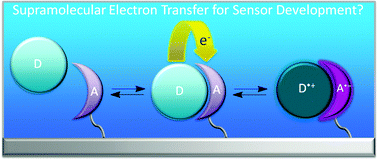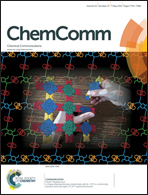Supramolecular electron transfer-based switching involving pyrrolic macrocycles. A new approach to sensor development?
Abstract
This Feature focuses on pyrrolic macrocycles that can serve as switches via energy- or electron transfer (ET) mechanisms. Macrocycles operating by both ground state (thermodynamic) and photoinduced ET pathways are reviewed and their ability to serve as the readout motif for molecular sensors is discussed. The aim of this article is to highlight the potential utility of ET in the design of systems that perform molecular switching or logic functions and their applicability in chemical sensor development. The conceptual benefits of this paradigm are illustrated with examples drawn mostly from the authors' laboratories.

- This article is part of the themed collection: Molecular Logic Gates and Information Processing

 Please wait while we load your content...
Please wait while we load your content...